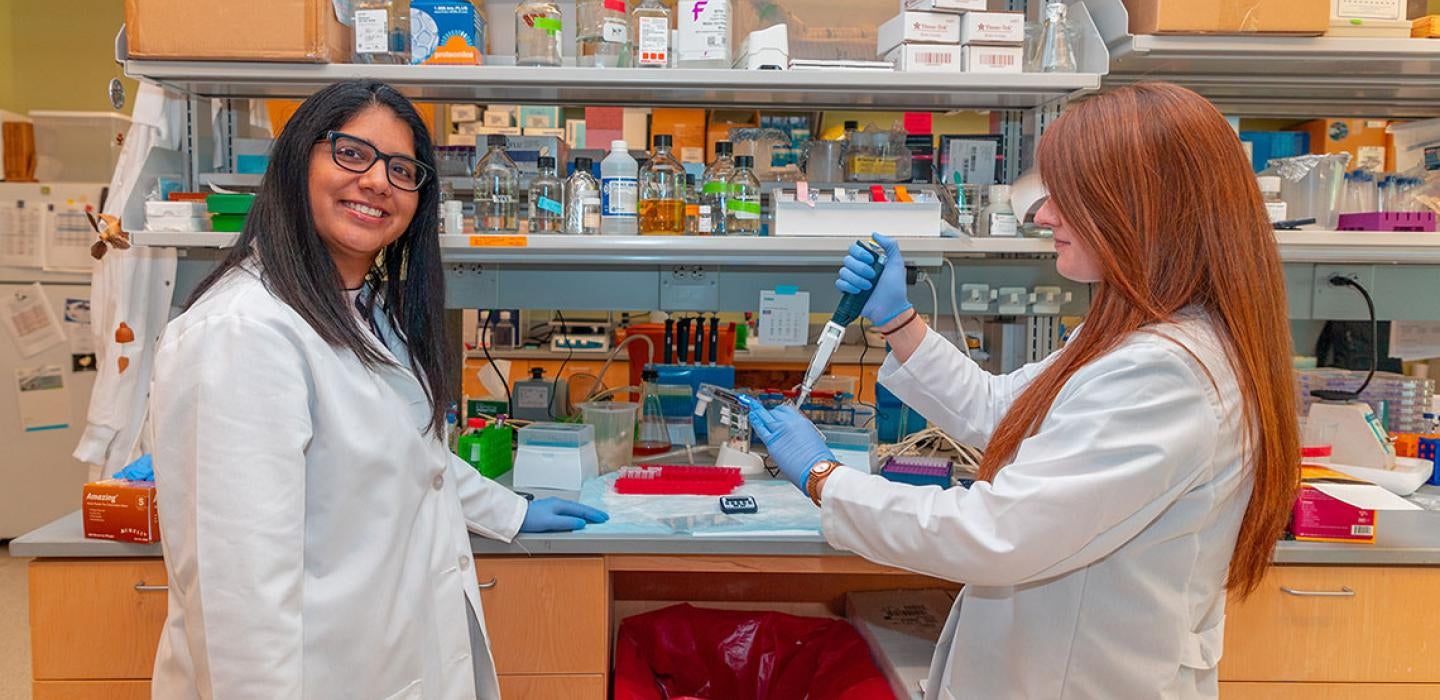
Subscribe to Pittwire Today
Get the most interesting and important stories from the University of Pittsburgh.If we can see the next pandemic coming, there might be an opportunity to stop it — or at least slow the spread, jump start vaccine and drug discovery and protect the vulnerable.
Detecting new respiratory viruses, specifically new strains of influenza, that might have easy transmissibility and stability to become pandemic is the goal of the new, federally funded “Pre-Pandemic and Pandemic Emergency Response Project” led by University of Pittsburgh and University of Arizona scientists.
“We’re going to characterize emerging influenza viruses — whether they be from birds, pigs or people — for their pandemic potential,” said project co-lead Seema Lakdawala, assistant professor of microbiology and molecular genetics in Pitt’s School of Medicine. “That is, their ability to easily transmit through the air, as well as their ability to remain infectious in different environmental conditions.”
The project is part of the University of Pennsylvania Center of Excellence for Influenza Research and Response (Penn-CEIRR), a nearly $7 million initiative funded by the National Institute of Allergy and Infectious Diseases. It brings together influenza experts — including Lakdawala — with the mission of decreasing death and disability from the flu. The Penn-CEIRR is one of six such sites, the first-year contracts of which total about $26.4 million.
With Michael Worobey, professor of ecology and evolutionary biology at the University of Arizona, Lakdawala’s team will assess the pandemic potential of viral strains identified by other projects within the center.
Lakdawala’s lab will do this by expanding on its previous work with ferrets — which have a similar susceptibility and immune response to flu as humans. They’ll test various scenarios involving previous exposure to existing human flu strains and how that influences susceptibility to new emerging strains.
Her team also will explore how human mucus affects the viral strains and the impact of humidity on their stability. Her previous work with seasonal influenza found that mucus protected the virus from potential degradation at higher humidity levels.
Finally, they’ll examine each strain’s ability to grow in the cells that line the human airway, which is where the viruses that cause seasonal flu and COVID-19 initially replicate, making people contagious.
All the project’s discoveries will be shared with other sites in the Centers of Excellence for Influenza Research and Response, allowing for the rapid advancement of pandemic science.
“This is such a multi-disciplinary project that couldn’t have been launched here without the help of many people, including Michael Myerburg in Pitt’s Cystic Fibrosis Research Center, Dr. Frank Jenkins in Pitt’s Division of Laboratory Animal Resources and all the staff in that division who helped us establish our ferret airborne transmission system,” Lakdawala said. “Their dedication and support enabled our program to grow and be competitive in securing this project.”
— Allison Hydzik, photo by Nate Langer/UPMC


